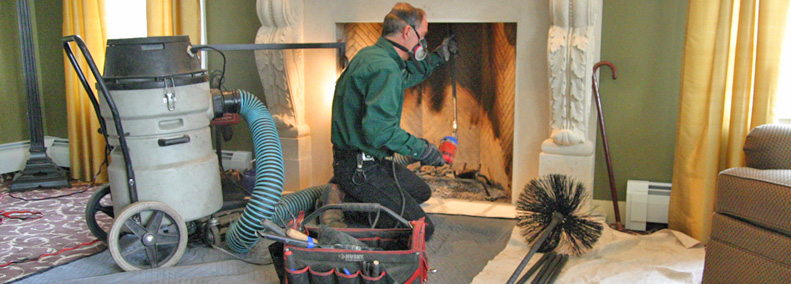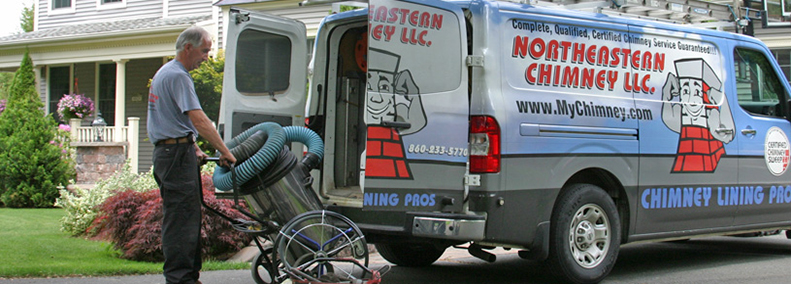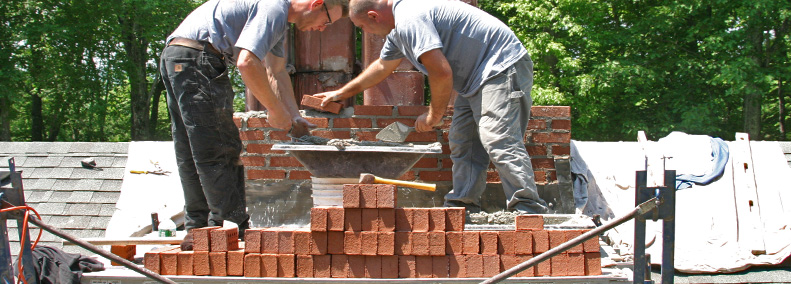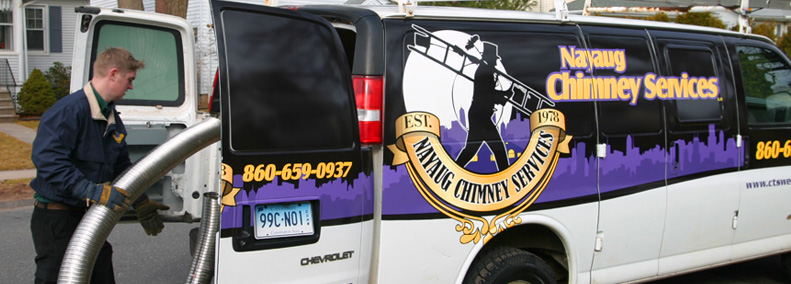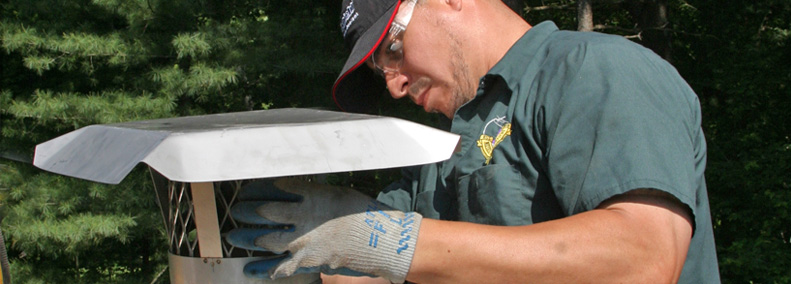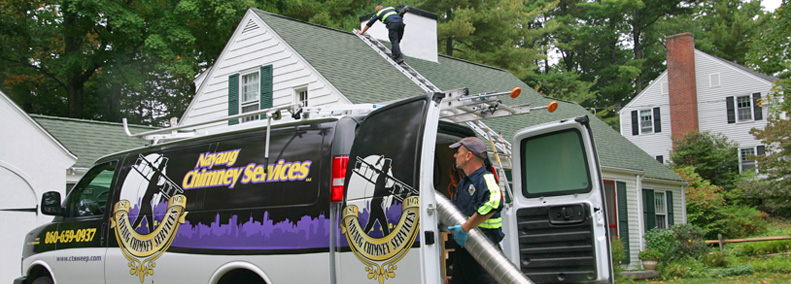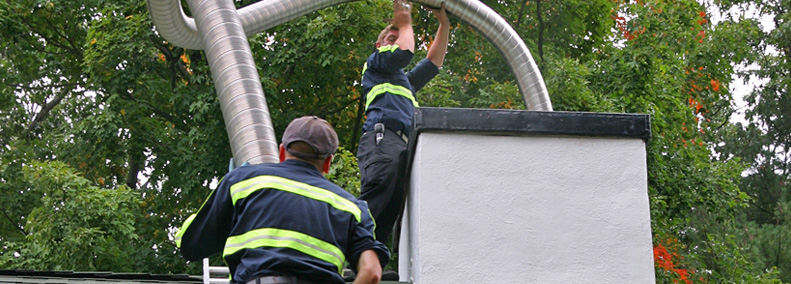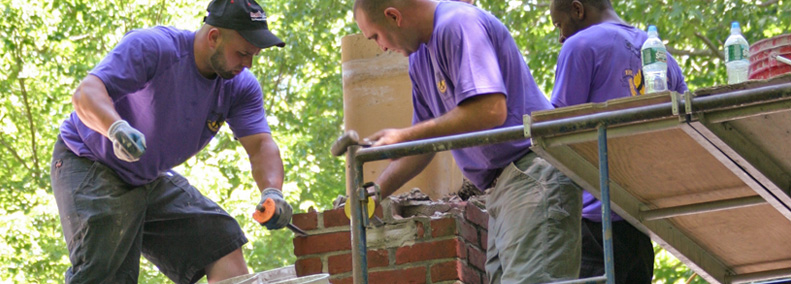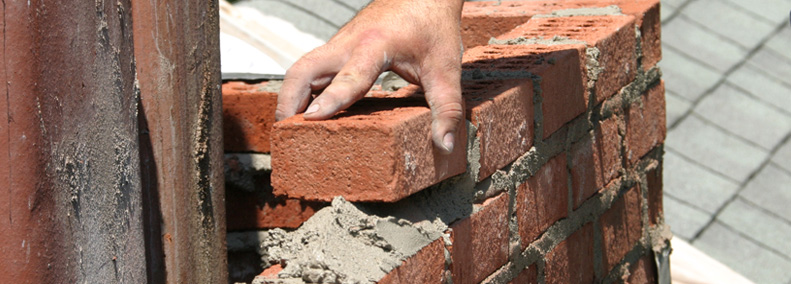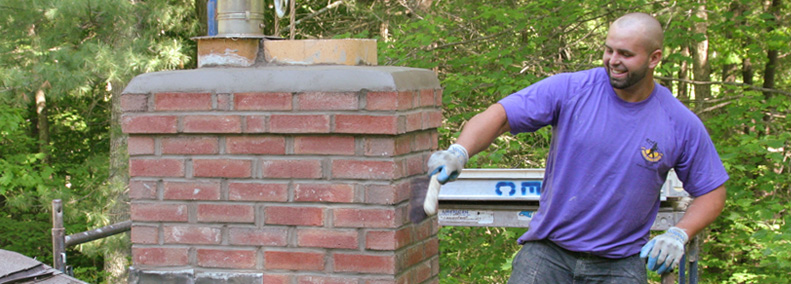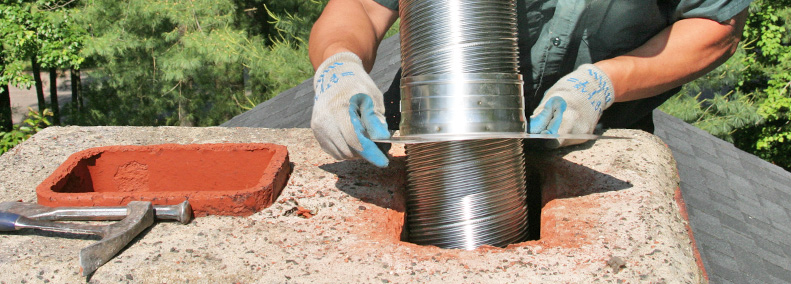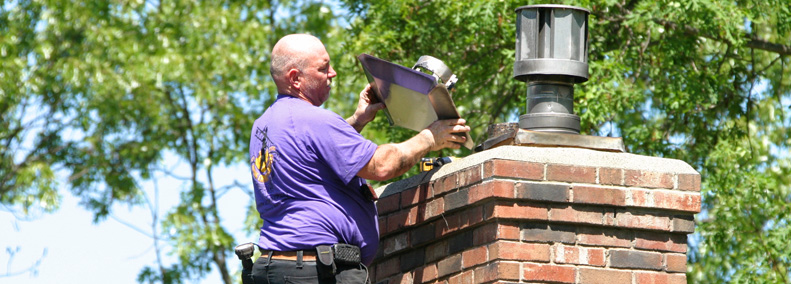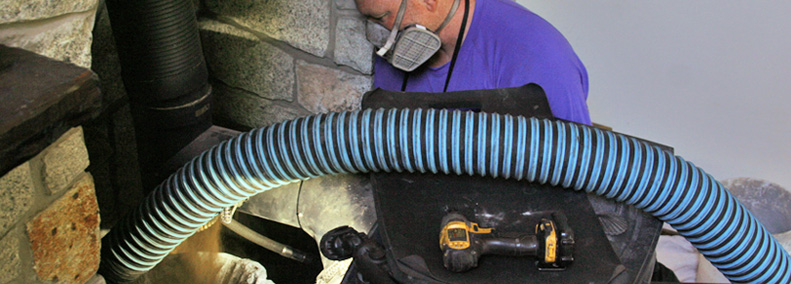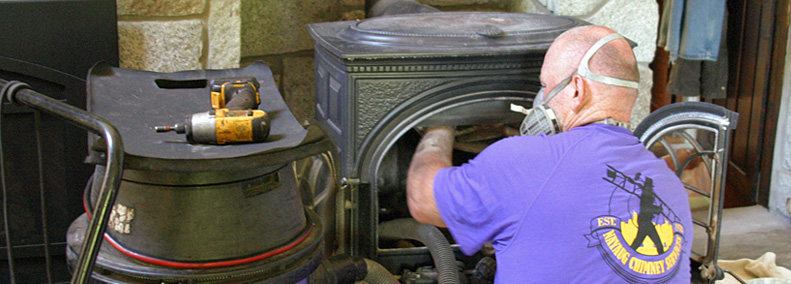09.21.11
What is the White Staining on My Chimney?
 Many homeowners just assume that this white discoloration is simply a sign of aging on a chimney. Nothing could be farther from the truth the white residue called efflorescence is actually a symptom of water leaking into your chimney system. This condition if left unchecked will cause premature aging and deterioration of the chimney structure for sure. Water and moisture are the biggest enemies of the structural integrity of your chimney.
Many homeowners just assume that this white discoloration is simply a sign of aging on a chimney. Nothing could be farther from the truth the white residue called efflorescence is actually a symptom of water leaking into your chimney system. This condition if left unchecked will cause premature aging and deterioration of the chimney structure for sure. Water and moisture are the biggest enemies of the structural integrity of your chimney.
What is Efflorescence?
 Efflorescence forms from soluble-solutions moving through masonry material and evaporating on the other side, leaving behind the salt residue. It then becomes a white crystallized or powdery substance found on the exterior of stone, block, or brick masonry. The substance forms as a result of excess water in the structure that after crystallizing takes on a fluffy or fuzzy form and coats the exterior of the stone over time.
Efflorescence forms from soluble-solutions moving through masonry material and evaporating on the other side, leaving behind the salt residue. It then becomes a white crystallized or powdery substance found on the exterior of stone, block, or brick masonry. The substance forms as a result of excess water in the structure that after crystallizing takes on a fluffy or fuzzy form and coats the exterior of the stone over time.
The efflorescence is formed when problems occur with the chimney masonry which lets in excess water to the structure. This could include chimney material cracks, a chimney that has not been properly sealed or is missing a cap or other sealant. This defect allows rain water to seep into the brick or stone walls. As water moves through the wall, it dissolves salt particles naturally present in the masonry along the way. The water will then evaporate through the outside wall and leave behind the salt residue on the surface. These salt deposits create the white residue left on the chimney surface. While the salt deposits themselves are mostly an aesthetic problem and will not cause structural damage, they are a tell tale sign of excess water present within the structure. The visible salt residue is a sure sign of water leaking into the stone structure and if left alone, can cause serious damage to the structure. While the white salt on the surface is relatively easy to remove compared to other stains, further investigation must be done to stop the water leak at the origin before substantial damage to the structure is done.
3 Conditions Needed for Efflorescence to Exist
Without each of the following conditions, efflorescence will not occur.
1. Soluble-salts present within the masonry structure
2. Enough moisture to create a soluble-solution from the salts
3. A means for the salt to travel through the structure in order to evaporate on the exterior and leave behind the resulting crystallized efflorescence
Brown, Green, or Yellow Efflorescence
 The most common form of efflorescence is the white powdery residue, but it can come in brown, green or yellow as well. The color of the stains depends on the types of salt found within the structure wall. Crystalline deposits from over twenty different compounds have been found on masonry walls. Efflorescence producing salts typically come from sulfates of sodium, potassium, calcium, magnesium and sometimes iron. The various colors come from different minerals. For example, molybdenum, magnesium compounds, and vanadium sometimes create a greenish colored stain. Manganese compounds can also create a brownish stain at times.
The most common form of efflorescence is the white powdery residue, but it can come in brown, green or yellow as well. The color of the stains depends on the types of salt found within the structure wall. Crystalline deposits from over twenty different compounds have been found on masonry walls. Efflorescence producing salts typically come from sulfates of sodium, potassium, calcium, magnesium and sometimes iron. The various colors come from different minerals. For example, molybdenum, magnesium compounds, and vanadium sometimes create a greenish colored stain. Manganese compounds can also create a brownish stain at times.
Protect Your Home from Efflorescence before it Appears
The best way to take care of efflorescence is to never get it! It is difficult to guarantee efflorescence will not later develop when building a chimney, but there are ways to lessen the chances of its occurrence. By taking away any one of the 3 conditions listed above, efflorescence will likely not take place. The most straight forward way to reduce the appearance of efflorescence is to use materials in the building process that do not contain large amounts of soluble salts, or those that contain low alkali. Proper drainage away from the structure will also serve to prevent efflorescence from occurring. Eliminating the source of the moisture will not allow the soluble-solution to form in the first place. Otherwise, brick sealants in the building process and before efflorescence has begun will prevent the deposits as well.
The Dangers Associated with Efflorescence

If you see white stains on the outside of your chimney above the roof, you can be sure this condition is flowing down into the attic as well. Adding moisture into the attic where the wood meets the brick creates mold and rot.
Most of the time harsh rain and winds will remove outdoor efflorescence on its own with normal weathering. And if this is not the case, or if the efflorescence is indoors, these deposits are relatively easy to wash off by hand (see the DIY guide below), but the problem will continue to reappear if the leak is not fixed at the source. The crack or missing part that let the water into the structure must be found and if there is not a place like this, the brick must be sealed so that moisture does not continue to permeate the stone.
 To find the source of the excess moisture being let in, begin at the top of the chimney working your way down while looking for missing mortar, cracks, missing caps, bad flashing and anything else that looks in need of repair. If there are no obvious problems, then the excess moisture is most likely seeping in through the brick and the brick will then have to be sealed once the current efflorescence has been removed. Brick does not act like a wall against moisture, the material acts like a sponge so further protection may be necessary.
To find the source of the excess moisture being let in, begin at the top of the chimney working your way down while looking for missing mortar, cracks, missing caps, bad flashing and anything else that looks in need of repair. If there are no obvious problems, then the excess moisture is most likely seeping in through the brick and the brick will then have to be sealed once the current efflorescence has been removed. Brick does not act like a wall against moisture, the material acts like a sponge so further protection may be necessary.
DIY Efflorescence Cleaning
When the weather outdoors does not take care of much of the unsightly white residue of the efflorescence, the underlying problem is still present and the stains will reoccur. If you have a severe case of efflorescence deposits on your hands, there are DIY instructions on several websites detailing the use of muriatic acid (very harsh chemical) diluted with water to remove the white stain coating from your chimney walls. There are also premixed solutions available for do-it-yourselfers to clean stained brick.
A chimney professional should inspect any chimney that has efflorescence to determine the extent of damage caused from the moisture that has been allowed to enter the brick and mortar. If the damage is minimal, the chimney may be able to be cleaned and then coated with a water resistant sealant to the protect the chimney. These waterproofing sealants provide an increased barrier against moisture, but are not a permanent solution especially if the condition has already damaged the brick and mortar.

 Tap to Call Now
Tap to Call Now
